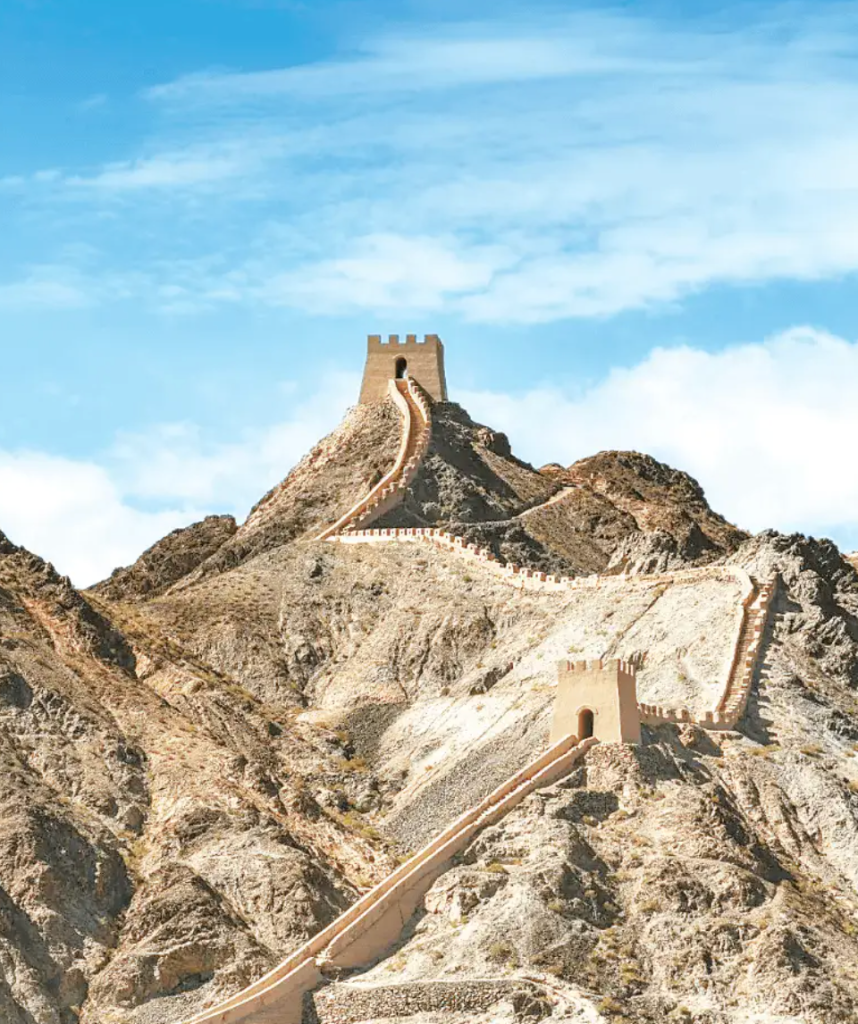The Great Wall of China has a long history, and its construction was initiated in the Spring and Autumn Period (770B.C.-476B.C.) and the subsequent Warring States Period (476B.C.-221B.C.). During these times, it was mainly built as a defense facility to prevent invasions from other states and external nomadic tribes.

To understand the origin of the Great Wall in the Spring and Autumn Period, we first need to look at the historical context of that era. After the Shang Dynasty collapsed, the Zhou Dynasty took over the administration of China. The Zhou Dynasty is divided into the Western Zhou (the middle of the 11th century B.C.-771B.C.) and the Eastern Zhou (770B.C.-256B.C.). The Eastern Zhou Period further includes two stages: the Spring and Autumn Period and the Warring States Period. In the Spring and Autumn Period, the central power of the Zhou Dynasty weakened significantly, and various regional states began to grow stronger. They competed for territory, resources, and dominance, while also facing threats from external tribes. Building defensive walls thus became a necessary measure for these states.
The Great Wall of the Chu State
The Chu State was one of the powerful states in the Spring and Autumn Period. It was initially located in the central plains along the lower reaches of the Yellow River. Although its agricultural development was relatively slow, it had a strong military force. With this military advantage, the Chu State continuously expanded its territory to the banks of the Yangtze River. Geographically, it bordered the Han, Wei, Song, and Qi States to the north, the Ba and Qin States to the west, the Bai’e region to the south, and the sea to the east. Among the major states at that time, the Chu State had the largest territory.
According to historical records, the Chu State was the first to construct components that would later evolve into the Great Wall. In the Spring and Autumn Period, the Chu State started as a small vassal state and gradually grew stronger by conquering weaker neighboring states. To gain dominance in the Central Plains and fend off invasions from the powerful Jin and Qi States, around 656B.C., the Chu State began building a series of walls along its northern border. These early boundary walls were shaped like the letter “U” and were later referred to as “the Rectangle Wall”—they were the earliest form of the Great Wall in Chinese history.
When entering the Warring States Period, the threat to the Chu State intensified, especially from the Qin State, which was becoming increasingly powerful. To cope with this, the Chu State extended its existing walls, making them more solid and integrated to better defend against invasions from neighboring states. Today, traces of these long-disintegrated walls can still be found in various locations in Henan Province, such as Lushan County, Yexian County of Pingdingshan City, Wugang City, Fangcheng County, and Nanzhao County of Nanyang City.
The Great Wall of the Qi State
The Qi State was another important state during the Spring and Autumn Period, with its capital established in Linzi (the present-day Linzi County in Shandong Province). Geographically, it bordered the Lu, Chu, and Song States to the south, the Zhao State to the west, and the Yan State to the north. Even before the Spring and Autumn Period, the Qi State was already a large and powerful vassal state, with developed agriculture and a strong economy.
To safeguard its southern border and prevent invasions from neighboring states like Chu and Song, during the reign of King Xuan of Qi, the Qi State constructed a defensive wall in the southern part of its territory. This wall stretched approximately 500 kilometers from west to east, connecting the bank of the Yuan River in the west to the northern foot of Mount Taishan in the east. In some historical documents, this wall is referred to as the “Great Defense” of the Qi State. Unlike the early walls of the Chu State, the Qi State’s wall made full use of local geographical conditions—for example, using mountain slopes and river banks to enhance its defensive capabilities. Some sections of the wall even used local stone materials to reinforce the structure, making it more durable than rammed-earth walls in other regions.
Today, parts of the ancient Qi State Great Wall still remain in Shandong Province. For instance, in the Mengshan Mountain area, visitors can see the remains of the wall, which have weathered over thousands of years but still showcase the architectural wisdom of the ancient Qi people. These ruins are important physical evidence of the early Great Wall and provide valuable insights for studying the military and architectural history of the Spring and Autumn Period.
Significance of the Spring and Autumn Period Great Wall
The Great Wall built in the Spring and Autumn Period laid the foundation for the subsequent development of China’s Great Wall. Although these early walls were not as long or grand as the Great Wall of the Ming Dynasty, they established the core function of the Great Wall as a defensive facility. Moreover, the construction experience, architectural techniques, and defensive concepts accumulated during this period were passed down to later dynasties. For example, the rammed-earth technique used in building the Chu and Qi States’ walls became a common method in Great Wall construction for subsequent centuries, and the idea of combining natural terrain with man-made walls was also inherited and developed.
In addition, the Spring and Autumn Period Great Wall reflected the political, military, and geographical situation of that era. Each state’s wall construction was closely related to its own strategic needs and surrounding threats, which provides important historical materials for studying the political pattern and military conflicts of the Eastern Zhou Period. These walls were not only military defenses but also symbols of the power and territory of each state, marking the initial formation of border awareness in ancient China.